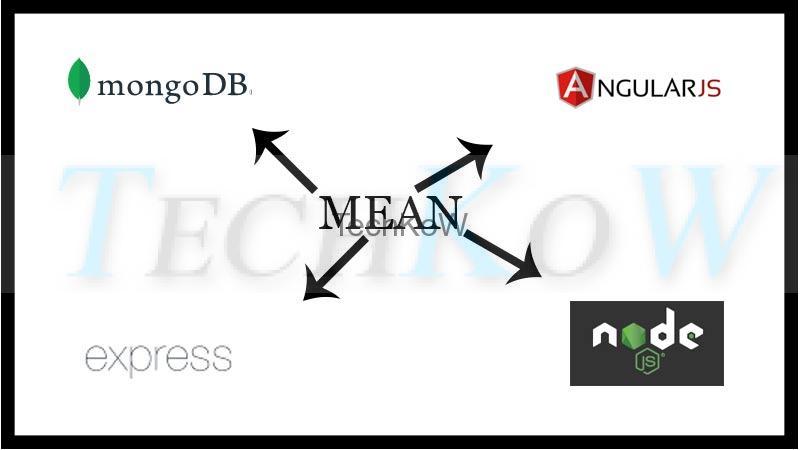Developers have traditionally assessed their ability to build on the integrated stacks of fundamental technology for their applications. They may spend more time focusing on applications that distinguish their business with a set of standardized building blocks instead of adding many distinct components together. In recent years, the popularity of the MEAN stack development has expanded considerably.
Nearly 95.2% of websites employ JavaScript as their programming language on the client side. And almost every gadget nowadays runs on JavaScript. It has led to JavaScript frameworks like the MEAN stack being popular and growing.
As a Mean Stack Developer, the profession is very prestigious and demanding. So, suppose you are willing to work with the broad skills and expertise in working with different code languages and applications. In that case, you will become an effective MEAN Stack developer.
What is Mean Stack?
The MEAN stack is a set of JavaScript-based frameworks for web application development. MEAN is named after four key technologies that make the layers in the Stack, namely MongoDB (document database), Express (Node.js web framework), Angular (client-side JavaScript framework), and Node (the premier JavaScript web server).
Therefore, everything is based on JavaScript from the client to the server and the database. This open-source web stack is often used for developing scalable, adaptable, and extendable cloud-deploying apps. Each MEAN technology employs the same programming language, which allows developers to reuse code across technologies.
MEAN is an easy-to-use Stack that is the perfect solution for the building of dynamic websites and applications. This free, open-source Stack offers a fast and systematic way of producing quick web-based prototypes.
Advantages of the MEAN Stack
You can write a cross-platform application in several ways. While MEAN is especially suitable for real-time applications, especially for cloud-based applications and one-page (dynamic) Web applications are written with Angular.js, you may utilize it for other applications such as:
- Workflow tools for management
- Sites for aggregation for news
- All applications and calendars
- Interactive forums
Since JavaScript and JSON are all the components, integration across stack components is intuitive and simple.
Additionally, the E and A of MEAN (Express and Angular) are two of the most popular and well-supported JavaScript frameworks for back-end and front-end development, respectively. Express makes routing and managing HTTP requests and responses super easy and includes excellent support for middleware to handle JSON endpoints and form posts. Angular is a robust framework for building dynamic, back-end HTML pages to communicate with.
Whether a high-performance API, a simple web application, or a microservice is built, MEAN is the perfect Stack to create Node.Js applications. All MEAN stack components are open source in nature, which gives developers a tremendous free chance.
Who is a Mean Stack Developer?
For starters, a MEAN Stack developer is a full-stack developer specializing in using the MEAN Stack of JavaScript. As they are full-stack developers, they work on both the program’s front and back ends.
Since MEAN is JavaScript-based, a MEAN developer in the JavaScript language should be highly trained. MEAN stack developers must be able to design different websites, including news aggregation sites, through the four core languages of MEAN. You can also create web apps like calendars, mappings, and location finding.
Is Mean Stack worthy of learning?
The expansion and scope of web development, the best career potential nowadays, are endless—a recent poll created about 23,000 jobs every month.
How much time will it take to learn Mean Stack?
MEAN Stack is indeed straightforward to learn, yet MEAN Stack is fully JavaScript-based. So it won’t be accessible if JavaScript is a challenging language. Yet if you can learn how to understand and create JavaScript, you can quickly learn MEAN Stack.
If you already know how to create a back-end, it takes 4–6 weeks for you to learn front-end development. So you may predict that it would take 8–12 months to become a fully stacked developer depending on how well you code and how fast you learn, and other primary computer material.
In addition, how do you learn to mean stack development? A suggested learning plan is provided here: Start building a small, complete MEAN stack app, provided you know JavaScript basic and HTML. Once you have trusted in your local machine and have produced a few apps, it’s time to immerse yourself in any framework.
Required skill set for Mean Stack developer
- Mean stack developers should work on the processes of the front and back end
- The mean stack developer should be able to deal with HTML & CSS
- They should comprehend programming templates and guidelines for the design of architecture
- Aware of web development, continuous integration, and cloud technologies
- Good knowledge of DB architecture
- SDLC knowledge and developing experience in an agile environment
- Work with the IT team to develop solid systems that support business goals
- Sure, hands-on Mongo, Express, Angular, Node experience.
How to become a Mean stack developer?
Several courses are available online to study the MERN stack, but not every class is good, and you will lose both your time and money if you are stuck on the wrong course. As you can see, there are different technologies in the MERN stack, and each one needs adequate direction. You will need to know how to jointly develop a MERN stack application after understanding each one correctly.
Final words
The MEAN stack is becoming more prominent nowadays. The MEAN stack is a good solution for every Web development designed for the cloud, valued for flexibility, consistency of language, and scalability.
MEAN Stack is here to stay, with a fantastic payroll and huge growth potential. Developers often function as technical architects in this industry. Since medium stack developers are competent in building website frameworks, practically every business always needs them. MEAN is undoubtedly the technology of the future that is much needed.
Choose one of the top courses to master the MEAN stack in 2021 without wasting your time anymore. The course provides the basics of MEAN, which is excellent for beginners. It also offers a step-by-step tutorial for building full-stack applications with MEAN and a handy experience.





